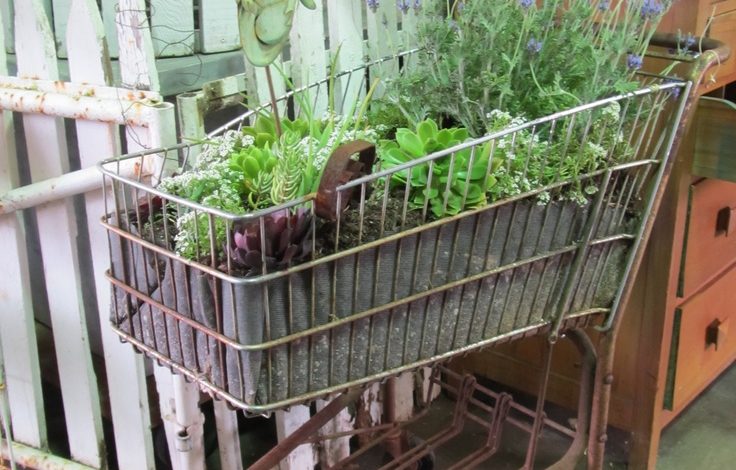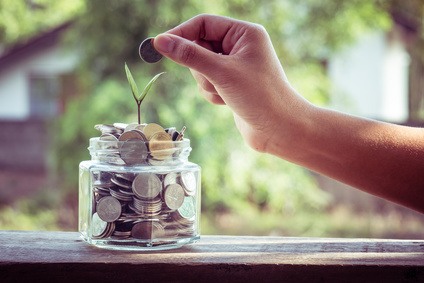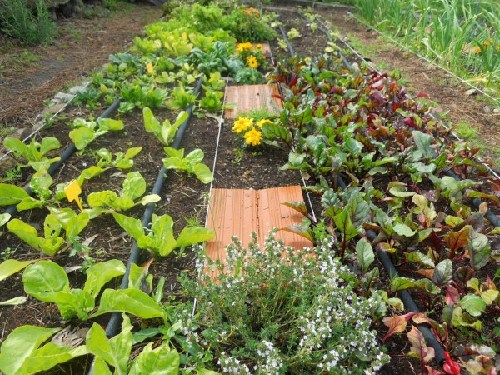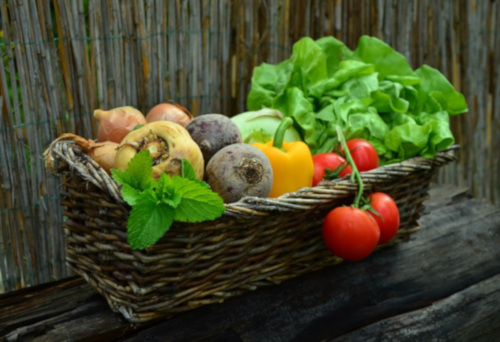A custom garden to SAVE in the shopping cart

Hello farmers! If the economic crisis that we have been suffering for several long years has taught us anything good, it is to save. One way to save and, in addition, have a good time, is to cultivate your own garden, many have even started the path to achieve self-sufficiency. And it is that, when a good part of our food is produced by ourselves, the savings can be considerable. However, cultivating your own organic garden can involve a lot of work and the investment of a lot of time if you oversize it: too much effort in maintenance and an overdose of harvest that many times we do not know what to do with it.On the contrary, a small garden may not help us much when it comes to reducing food expenses. For this reason, today I am going to give you some advice so that you can adapt the garden to your needs and your free time and, of course, save when you go shopping. Go for it!

A custom garden to save: time and space
Do not rush. To grow vegetables and see if you are good at it, if you like it or if you simply have enough time to take care of a garden, you don’t have to start with a bang, otherwise you will have invested a lot of time and money in something that doesn’t work. to last long. You can start with several plants in a planter or in pots, or if you have some land, try a small square of about two square meters. However, if you really want to save on your food bill, at least during the harvest season, you will need to create a vegetable garden.

So that the harvest is not too heavy and the consumption of these vegetables is not an obligation, we are going to adapt the dimensions of this garden to our needs and, most importantly, the time that we are going to be able to dedicate to it; It is useless to have a very large garden if we do not have enough time to work it correctly. So that you can orient yourself, in terms of dimensions, a garden of 80 to 100 square meters, is the maximum area that is recommended for a garden in a second residence, with a good offer in terms of variety of crops and allowing to have harvest throughout the year, including winter. However, if you only want it during the spring and summer, which are the peak times of the orchard, with 50 square meters per person is enough to feed on the harvest.
The two great periods of activity for the orchard are spring, with sowing from March to April and transplanting from May to June; and on the other hand, late summer and autumn, when we finish harvesting and the preparation and fertilization work begins. Obviously, the larger the surface, the more effort and time. For a garden of between 80 and 100 square meters, half a day a week in spring will be enough, while you will need a weekend in the fall, approximately.

If your goal is self-sufficiency, you need at least 80 square meters per person, which covers the consumption of fresh products but also frozen foods, preserves and jams, especially for winter. To do this, you should dedicate to the garden at least one day a week in spring and summer, when crops need more care, and about three weekends during autumn and winter.
Add a plus to your garden. By using pots, at least 30 cm in diameter, on the balcony, you can make the most of the space for the cultivation of fast-growing vegetables, which produce in abundance and are easy to harvest, such as cherry tomatoes, courgettes, radishes or mesclun. In addition, if you use seedbeds, during the time that the seed needs to germinate and develop the seedling until the moment of transplanting, it is a period in which the land of your garden is free to grow other vegetables, so,you can grow more in the same time and with the same space.
As what we want is to save in the shopping basket, it gives preference to the most expensive fruits and vegetables that are in season, for example, strawberries. Thus, if you have to buy vegetables, let them be the ones that have a lower price.
Also save in the garden
Organic farming to reduce inputs. Organic farming, apart from all the benefits it entails, represents great savings, since expensive treatment products are dispensed with. To limit parasites, promote biological control and the presence of natural enemies such as predatory birds and insects, or use aromatic plants to drive them away. You can also make your compost by composting garden and kitchen waste, or grow green manure yourself. Another way to reduce inputs isObtaining your own seed from the plants in the garden, thus, in addition to saving, you will ensure that your seeds are 100% organic.

Whenever you can, use varieties that are not very demanding in terms of care and irrigation and that produce quickly, and try to make the garden as flat as possible to conserve rainwater as much as possible, even from irrigation itself. Speaking of irrigation, why don’t you put a collector under a gutter and collect rainwater? You will save a lot of water and the rivers of your city will thank you!
As you can see, cultivating a generous garden to feed yourself is not too difficult. Spend less and eat better, would you reject such a proposal? Start cultivating your garden, you will notice the results from the first harvest, both in your health and in your pocket. Until next time!


![Photo of Yellow Daisies: [Characteristics, Cultivation, Care and Disadvantages]](https://www.complete-gardening.com/wp-content/uploads/2022/08/yellow-daisies-characteristics-cultivation-care-and-disadvantages-390x220.jpg)
![Photo of Peperomia Plant: [Planting, Care, Irrigation and Substrate]](https://www.complete-gardening.com/wp-content/uploads/2022/08/peperomia-plant-planting-care-irrigation-and-substrate-390x220.jpg)
![Photo of Kalanchoe Blossfeldiana Care: [Soil, Moisture, Pruning and Problems]](https://www.complete-gardening.com/wp-content/uploads/2021/06/412umWVeZBL._SL500_-390x220.jpg)